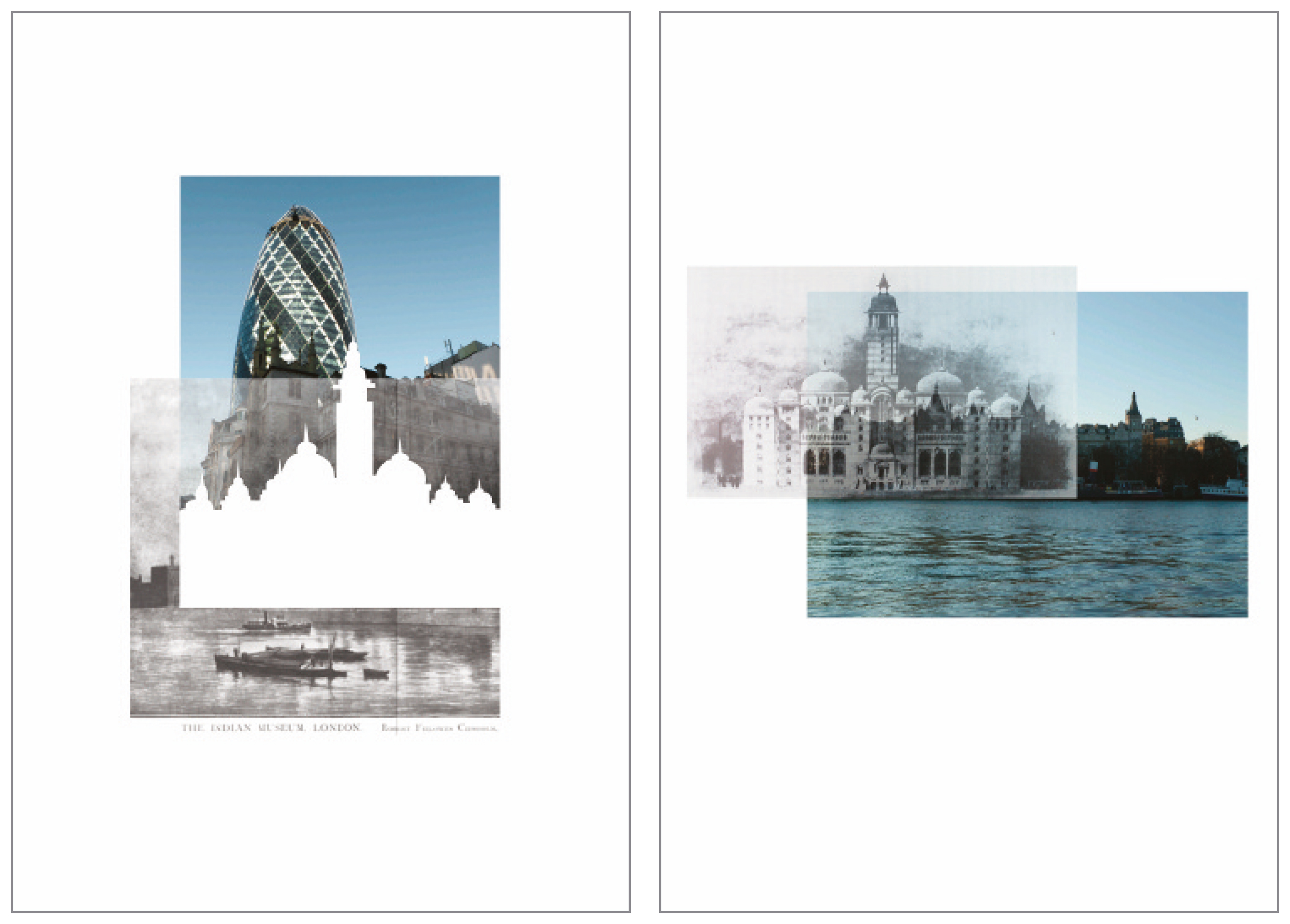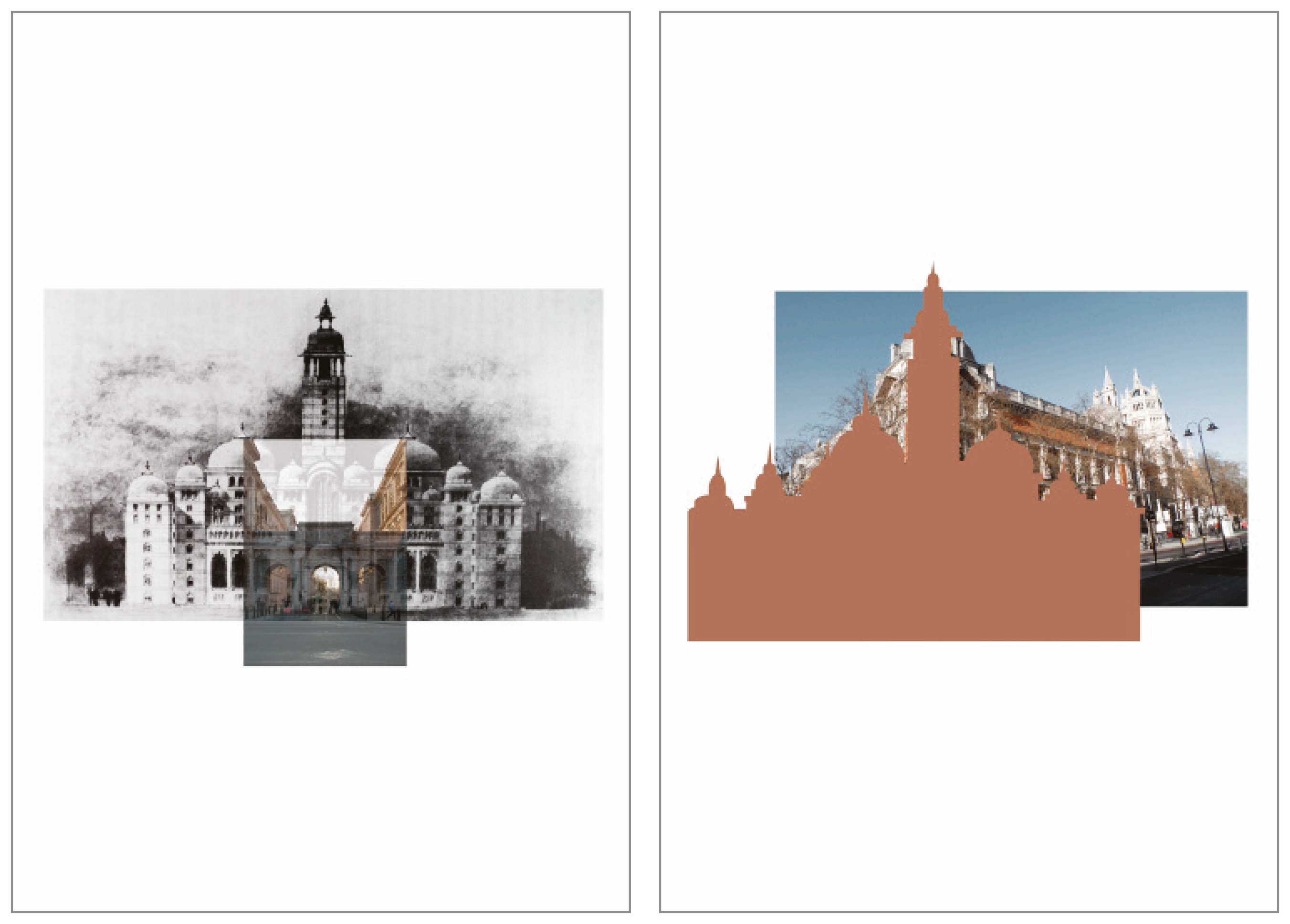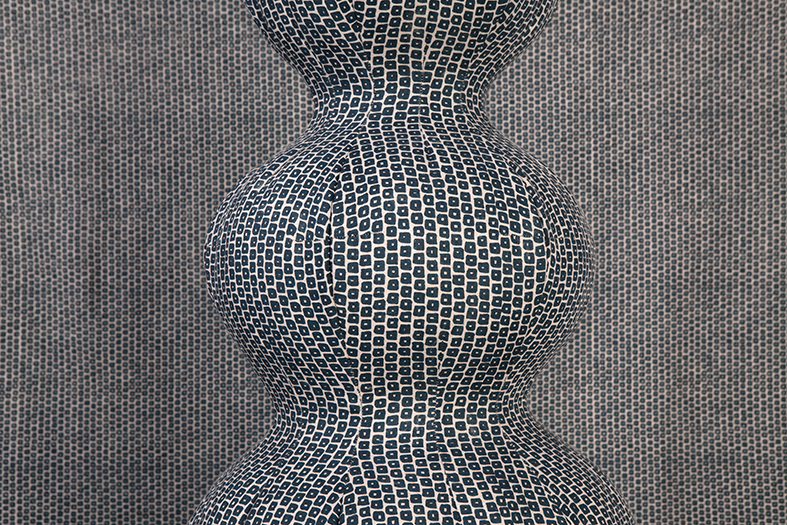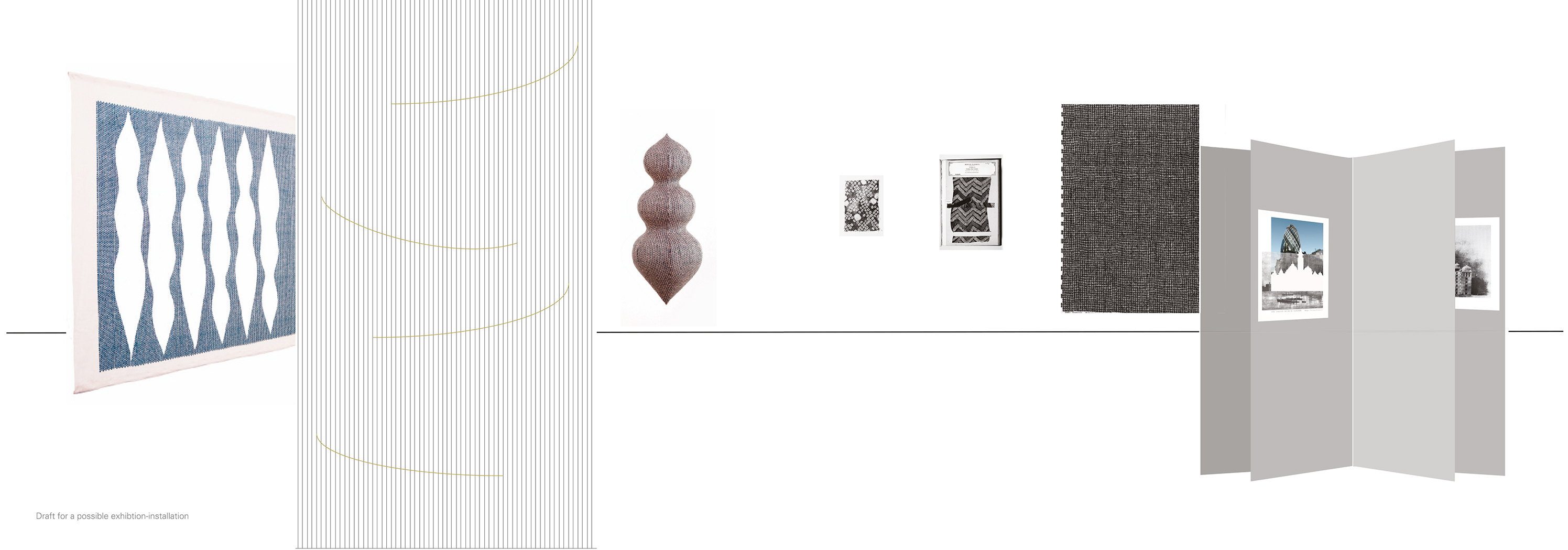
Collage of a possible Installation
Guiding Patterns
2014
Installation with different components:
• photographs
• printed fabric with cuts
• hanging fabric sculpture
• collages on display
• thread-installation
Three photographs of textile patterns from Peru, India, and the USA are the starting point of my work GUIDING PATTERNS. The patterns which I correlate, bear a strong formal resemblance, but have no tangible historic intersections; much rather, they were created independently from one another. The coinciding creation of similar languages of form at completely different times in different locations, and the corresponding histories, historiographies, and musealization are particularly interesting to me. In all likelihood, these patterns have never crossed paths, but are all in Western collections today.
Based on the formal aesthetics which connects them, I am interested in finding the stories behind these textiles and in using them in my work. The fabrics are re-contextualized in a story I have researched and brought into a specific historic structure. In this context, it was particularly important for me to develop an individual display for each piece which refers to the textile’s temporal and social background.
Following this notion, I designed and printed my own fabric in reference to the fabric created in the USA by Noémi Raymond. I developed a pattern for an object I based on Jean Arp’s découpages in order to give the issue of its physicality new urgency.
Researching the textile patterns from the albums of the Textile Manufacturers of India, I came across the history of the India Museum, which was planned in London but never built. I visualized the “lack” of this museum in London in collages and a display that is based on the shape of a book.
My installational presentation of the Peruvian fabric references the weaving loom and, with it, the production and abstractness of textile material in general. On the one hand, I am here interested in the fabric’s aesthetics, determined by the production process; on the other hand, it was the question of the importance of signs and how to classify and read them culturally that became central to me in this context.
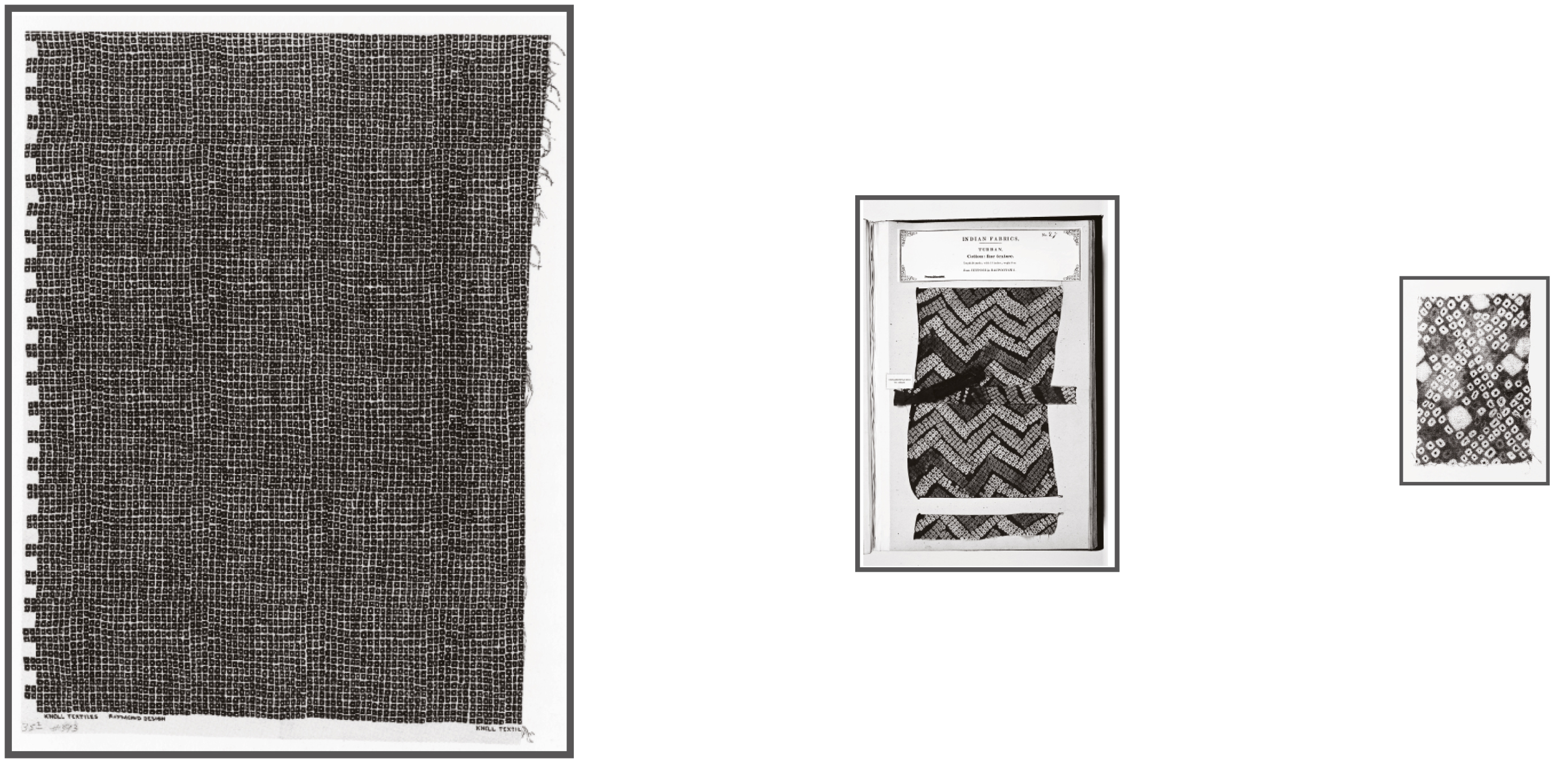
Photographs from three different Textiles with the same Ornamental pattern, Size corresponding with the original size of the fabric samples:
• Noemi Raymond, Chromogenic Print, 69 x 90 cm
• Textile Manufacturers of India, Chromogenic Print, 30 x 45 cm
• Nazca Textile, Chromogenic Print, 18 x 25 cm
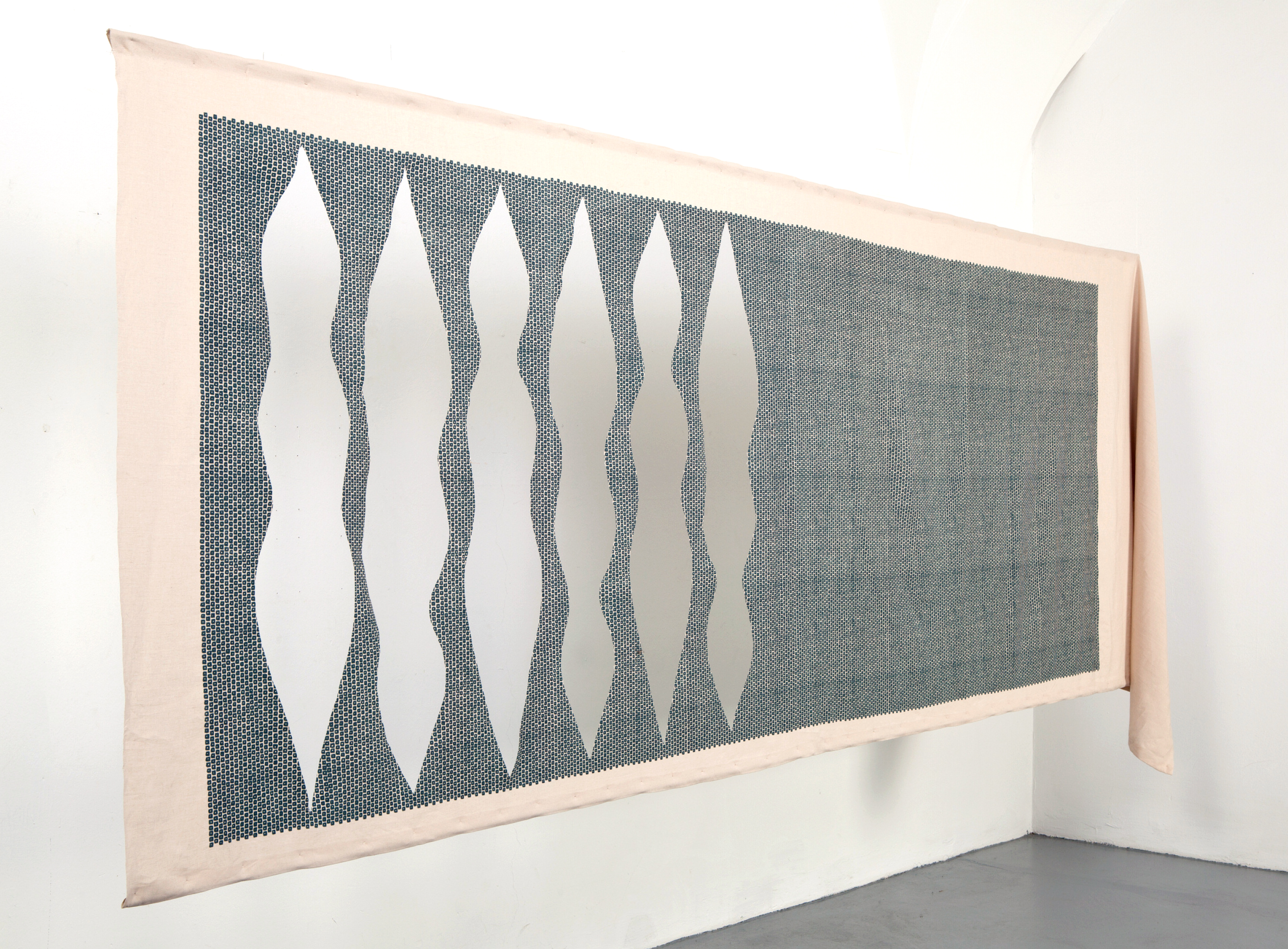
printed fabric, serigraphy, single piece, 142 x 480 cm
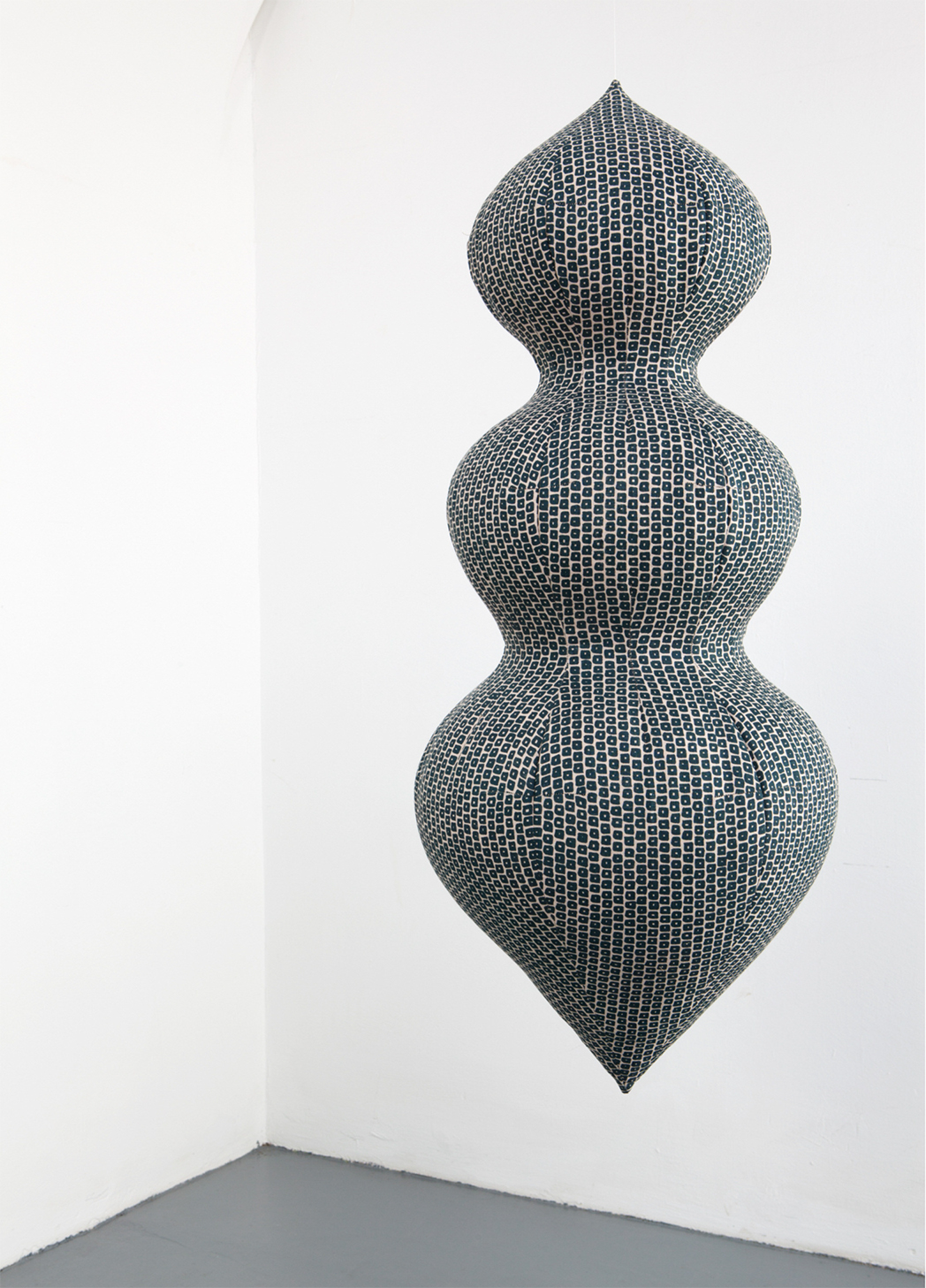
Object, single piece, serigraphy print, 35 x 110 cm
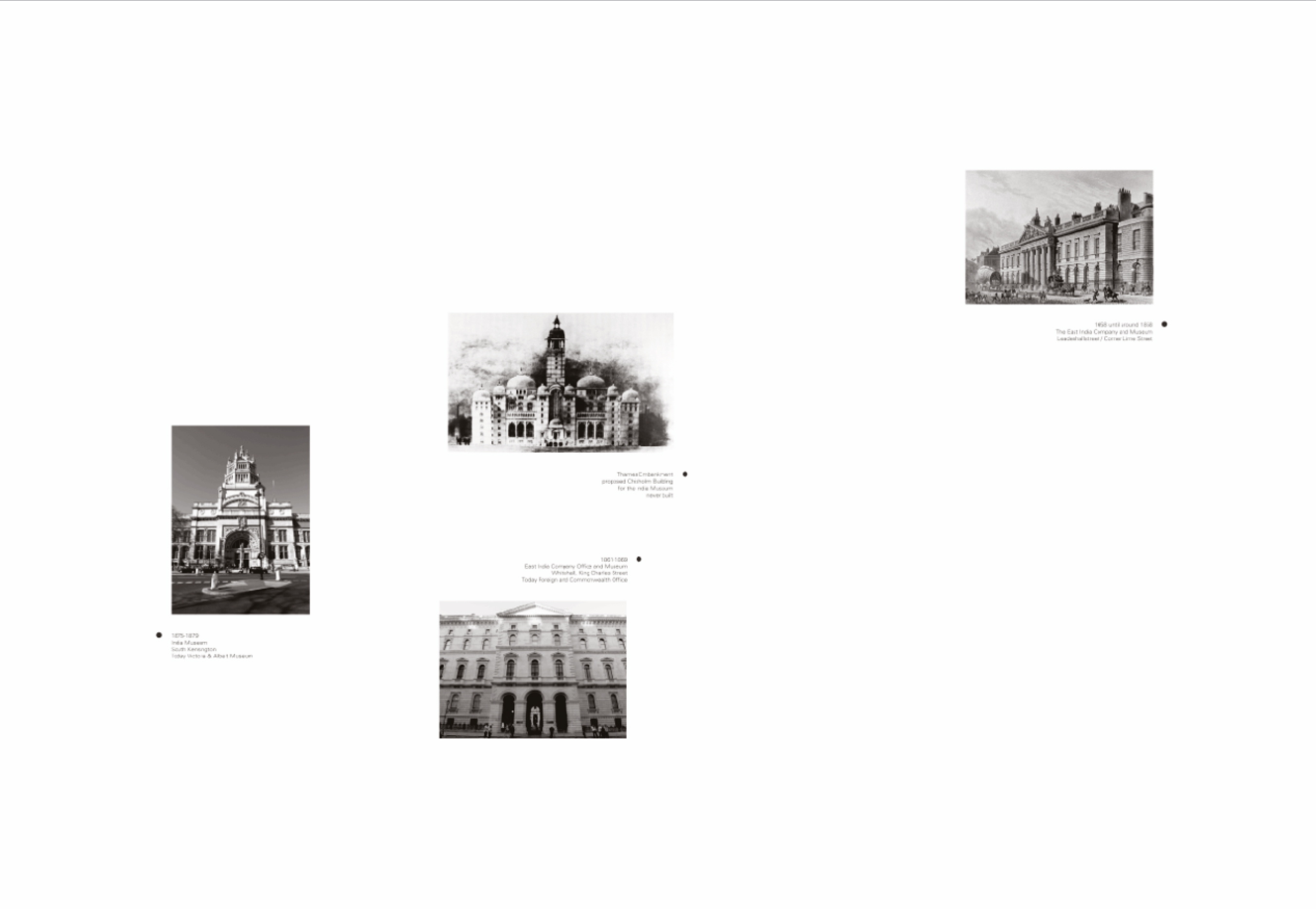
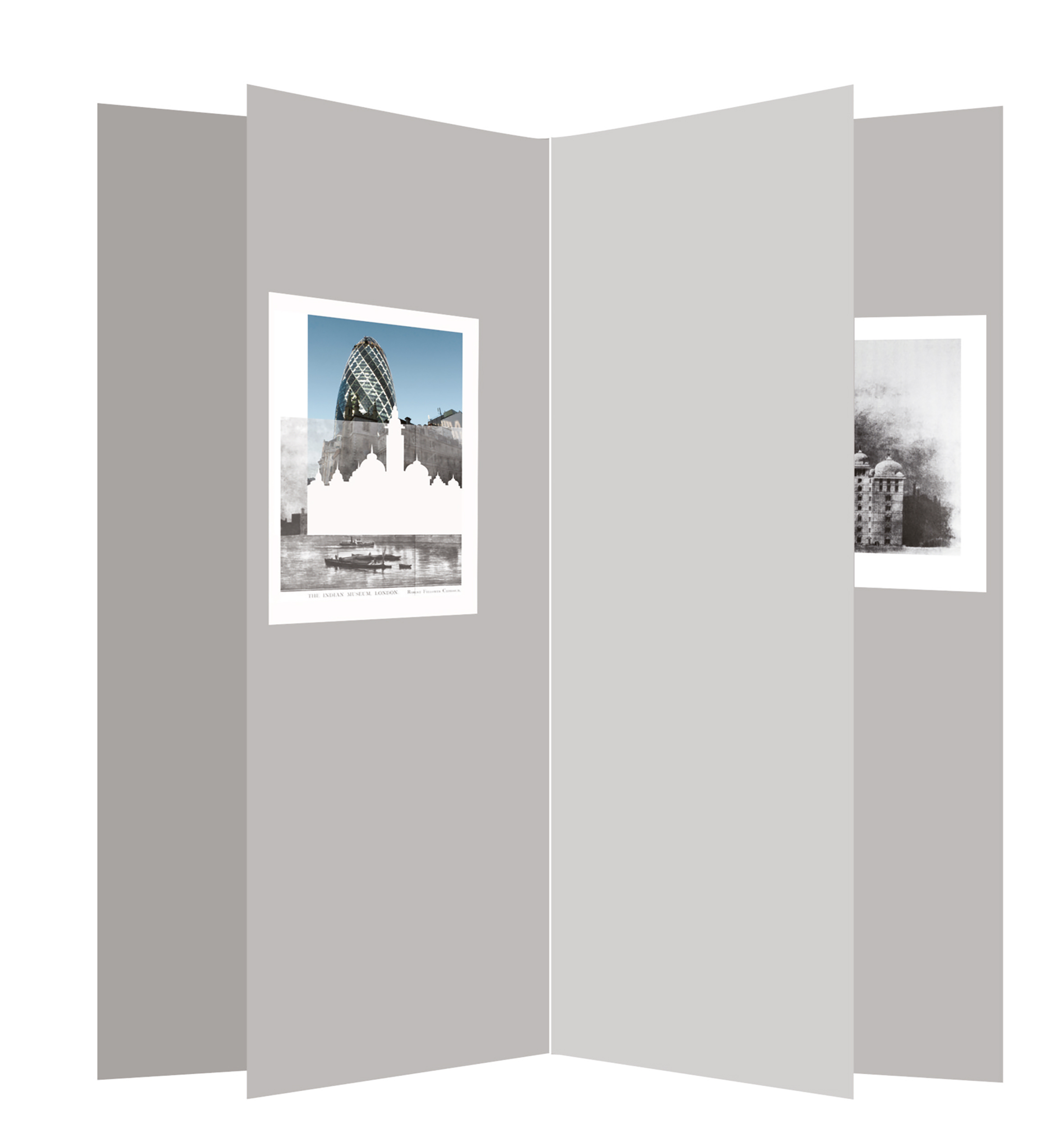
Display draft according to an idea of John Forbes Watson's Trade Museum, 5 Collages, Chromogenic Prints, 60 x 90 cm
